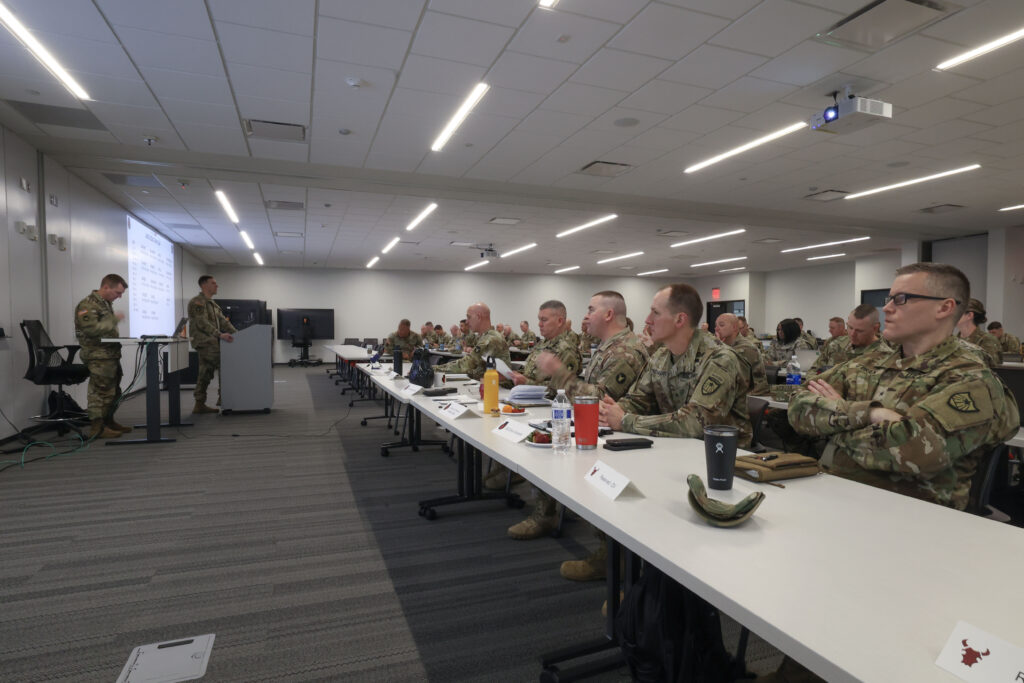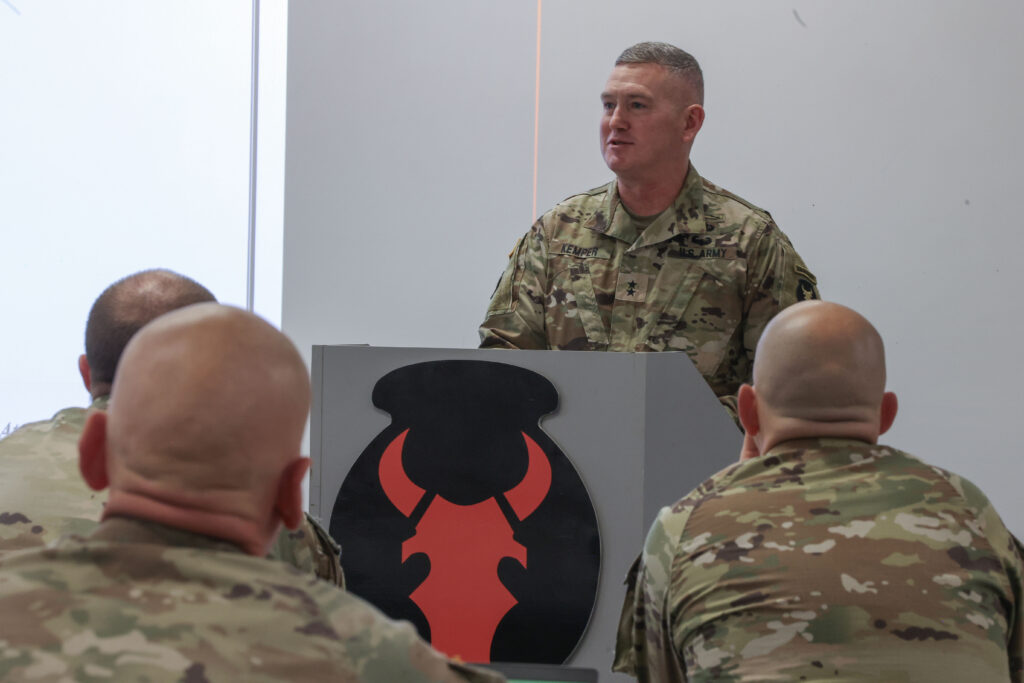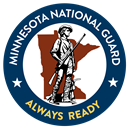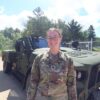Minnesota Red Bulls build partnerships at annual conference
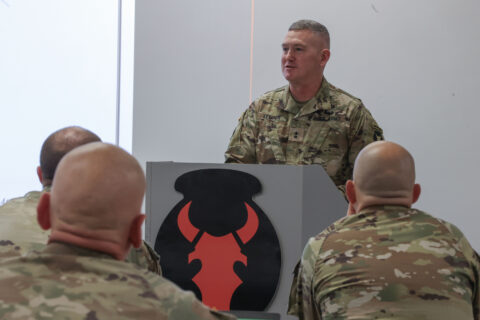
The Arden Hills-based 34th Infantry Division, also known as the Red Bulls, held its annual Operational Division Alignment Conference, or ODAC, on March 28, 2025, at the division headquarters in the General John W. Vessey Readiness Center at the Arden Hills Army Training Site. Last year’s conference did not take place as the division was deployed overseas.
Army Col. Ryan Kelly, the chief of staff for the 34th Infantry Division, Minneota National Guard, said the event’s purpose is to create an opportunity for geographically disbursed elements under the 34th ID to meet and collaborate.
“A regular Army division is made up of multiple brigades: maneuver, aviation, division artillery, sustainment, engineers,” Kelly said. “When we think of a regular Army division, like 1st Cavalry Division, it’s all going to be on Fort Cavasos in Texas. They will have the whole division there. In the National Guard, we have to spread that out over multiple states to have the same type of structured division. For the 34th, for example, we have elements of the division spread out over 25 states. So what we do at the ODAC once a year is we bring in leaders from all of those organizations that are in other states to align the efforts of the division, knowing that we have to cross state boundaries to do that.”
Twelve aligned units from eight states, including Minnesota, Iowa, Idaho, South Dakota, North Carolina, Illinois, Missouri, and Virginia, were represented at the conference. Also present were Minnesota National Guard personnel currently attached to the U.S. Army Europe and Africa (USARUR-AF) in Germany, 1st Army Division out of Camp Atterbury, Indiana, and Minnesota-based contractors with the Mission Command Training Support Program.
A major consideration for aligning the efforts of each of these elements for a National Guard division is that the adjutant general of each state holds the ultimate authority on what training activities the elements in their state participate in, Kelly said. While the 34th does not dictate how each state tasks their units, the conference can help to facilitate relationships and conversations aimed at coordinating partnerships between the elements in regard to pre-planned training opportunities.
“We can influence them (aligned elements) by being a responsible division headquarters and looking for opportunities to improve their training,” he said. “We look at things we can do as a division, and we look at the adjacent units in other states to find opportunities to help each other out.”
The conference helps leaders across the division examine the training plans each aligned element has for the foreseeable future and see where partnerships can be formed to fill in the gaps when the units need support.
“For example, the brigade is going to the National Training Center in 2026, and we are currently short a transportation company,” he said. “Ideally, the way it works is that someone in the room may say, ‘Hey, I have a transportation company that is looking for training in 2026, we would love to send them to the National Training Center.”
Another goal of the ODAC is to give the leaders of elements aligned within the division an opportunity to meet face-to-face and to create relationships, Kelly said.
“If we got the call today to mobilize an entire division to go deploy in a large-scale combat operation, we wouldn’t want to meet our subordinate or aligned units for the first time at a mobilization station in that type of emergency,” he said. “So this gives us the opportunity to begin understanding the capabilities across the division, building relationships, and becoming a slightly more proficient National Guard division through coming together once a year to discuss how we will conduct business.”
Kelly said the ODAC adds value for the aligned units in other states that do not regularly have the opportunity to work with a higher headquarters.
“We take it for granted here in Minnesota because we have division headquarters,” he said. “So, 1st brigade, aviation brigade, the division artillery, they’re used to this, interacting with a division headquarters, which is what you would do if you went to war. Those other units in the other states do not have that. Those brigades generally work for an administrative Joint Force Headquarters. This provides them an opportunity to have a tactical headquarters to discuss their training and operations with that they would not otherwise have if we did not have the ODAC.”
Aside from facilitating business relationships, the ODAC allows leaders to put a face to the name and create personal relationships with those they may someday train or deploy with. Kelly said this year’s conference was a success.
“It was highly successful and we continue to have a better turnout every year,” he said. “We see an appetite and appreciation from the aligned units in conducting this every year, and I think it is fair to say that we are going to continue this to make National Guard divisions tactically and technically proficient and more synchronized in the training across the division.”
Story by Sgt. 1st Class Sirrina Martinez
Minnesota National Guard Public Affairs
